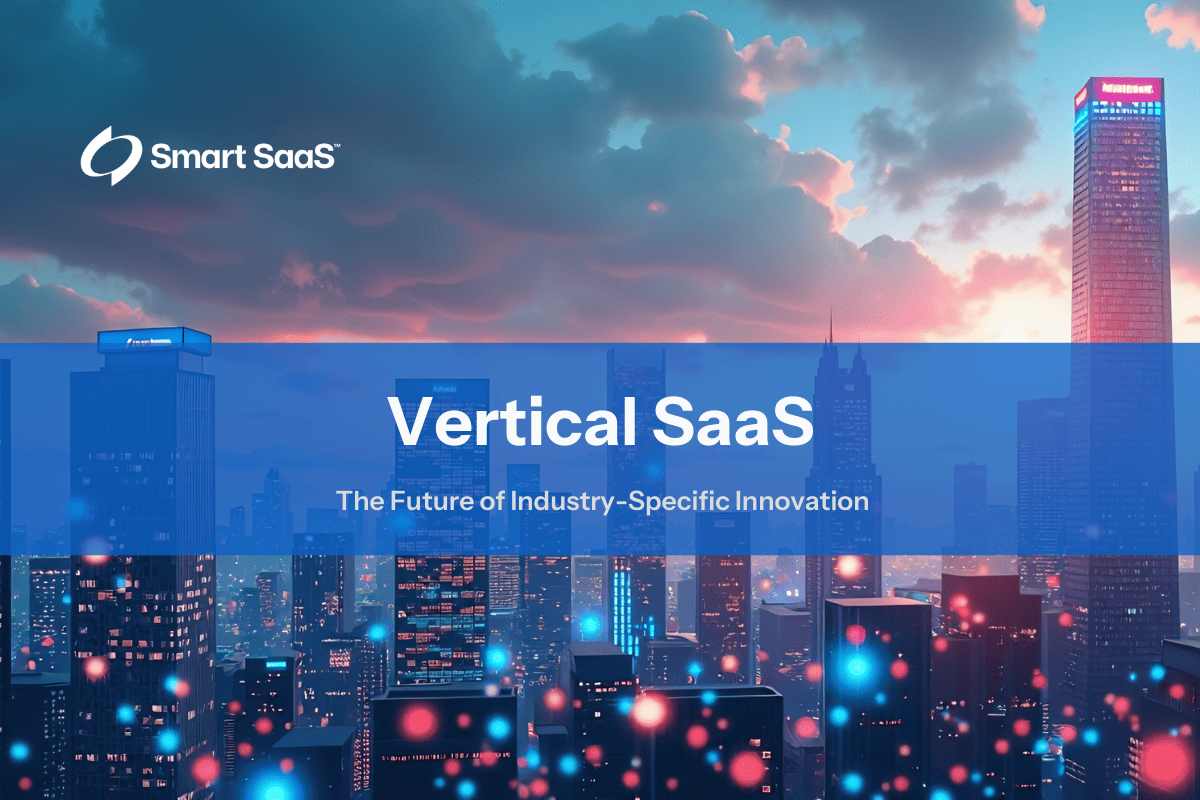

Tuesday, February 18, 2025
Kevin Anderson
Over the past decade, Software-as-a-Service (SaaS) has changed how businesses adopt and utilize software solutions. By delivering applications over the internet, SaaS lowers adoption hurdles, speeds up deployment, and reduces infrastructure overhead. While many of these platforms focus on broad, horizontal functionalities—think generic CRMs, project management tools, and email marketing services—a new class of solutions has been making waves: vertical SaaS.
Unlike horizontal SaaS solutions that cater to a wide spectrum of industries, vertical SaaS targets a single sector or market segment, tailoring every feature and workflow to that domain’s exact needs. Whether it’s healthcare, insurance, real estate, or manufacturing, these industry-specific SaaS platforms deliver deeper customization, specialized compliance, and advanced analytics that generic tools can’t match. This article will dive into the vertical SaaS meaning, discuss how it compares to horizontal SaaS, examine real-world examples, explore its benefits, and assess the future of industry-focused software.

Vertical SaaS refers to industry-specific software solutions designed to meet the unique needs of particular sectors, such as healthcare, finance, or construction. Unlike general-purpose software, these platforms offer tailored features, compliance support, and workflows that align closely with industry standards.
At its core, vertical SaaS is all about specialization. A vertical SaaS company develops products that address the intricate demands of a specific industry—such as healthcare’s need for electronic health records (EHR), or real estate’s requirement for robust property-listing integrations. These products don’t just skim the surface; they embed the compliance rules, workflows, and data structures unique to that market.
The massive success of horizontal SaaS can be traced to its broad appeal—nearly any company could use a generic CRM or project management tool. However, these horizontal platforms often lack depth. Industries with strict regulations or highly specific operational needs—like insurance, healthcare, manufacturing, or hospitality—require more than a “one-size-fits-all” product. This demand for niche software platforms has triggered a wave of innovation in vertical SaaS.


While horizontal SaaS solutions serve a broad range of industries with generalized functionality (e.g., CRM or accounting software), vertical SaaS is specialized, catering to niche markets with highly customized tools and integrations. This distinction impacts scalability, cost, and usability depending on business needs.
While horizontal SaaS solutions cast a wide net across various industries, vertical SaaS hones in on a single sector. Here’s how they compare:
| Aspect | Horizontal SaaS | Vertical SaaS |
|---|---|---|
| Scope & Target Audience | Broad solutions usable by many industries | Niche, industry-focused applications |
| Depth vs. Breadth | Wide functionality but less domain depth | Deeply specialized features and workflows |
| Compliance Focus | General data protection | Industry-specific compliance embedded |
| Customization & Scalability | Easy to scale, limited custom workflows | Balances scalability with deep
customization |
A horizontal CRM might offer a generic contact database and standard lead-management features. A vertical SaaS CRM for insurance would go further: it might automate policy quotes, integrate underwriting risk assessments, and run regulatory checks specific to local insurance laws. The difference isn’t just a matter of user interface; it’s about embedding domain expertise and specialized workflows that radically improve daily operations.


Various industries leverage vertical SaaS to enhance efficiency and streamline operations. For instance, Epic serves the healthcare sector with electronic medical records, while Procore optimizes construction project management. Exploring industry-specific examples highlights the role of vertical SaaS in driving digital transformation.
Real-World Impact: A healthcare SaaS platform might help clinics reduce administrative load by automatically verifying patient insurance eligibility, sending prescription reminders, and securing digital records in compliance with privacy laws.
Real-World Impact: Insurance companies can shorten claims cycles, reduce error rates, and improve customer satisfaction by seamlessly integrating policy data, client records, and regulatory rules into a single platform.
Real-World Impact: A property management firm can automate rent reminders, manage property maintenance requests, and maintain a tenant database—leading to smoother communication and quicker vacancy turnover.
Real-World Impact: By tracking performance metrics and compliance standards, manufacturers can identify bottlenecks, reduce downtime, and maintain high product quality.
Hospitality: Reservation and event management, staff scheduling, loyalty programs, and real-time guest feedback.
Education: Digital classrooms, grading systems, accreditation compliance, and learning analytics
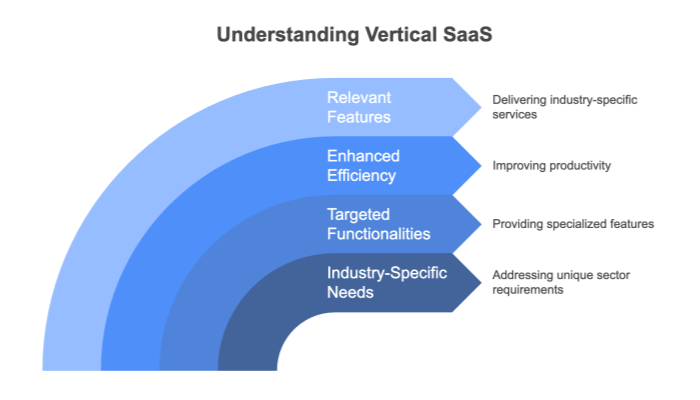

Adopting a vertical SaaS solution can provide businesses with industry-specific functionalities, improved compliance, automation, and a more intuitive user experience. These platforms often lead to increased operational efficiency, better decision-making, and a stronger competitive advantage.
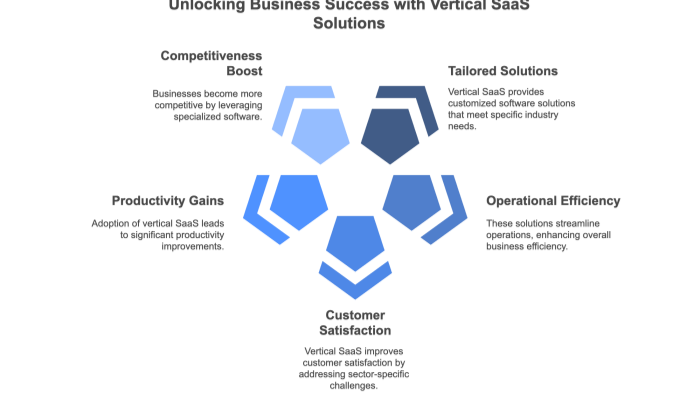

Successfully integrating a vertical SaaS solution requires careful planning, data migration, employee training, and workflow adaptation. A structured approach ensures smooth adoption, minimizes disruptions, and maximizes return on investment (ROI).
Before adopting a vertical SaaS platform, outline your core requirements. Consider which workflows are most critical, which regulations apply, and how many integrations are necessary.
The success of a vertical SaaS solution hinges on how effectively users can adopt and integrate it into their daily workflows. Since these platforms are tailored to specific industries, employees may need guidance to fully understand the specialized features and adapt to new processes. Offering structured training sessions—both in-person and online—can help teams become proficient quickly. Additionally, detailed how-to guides, video tutorials, and knowledge bases should be made available to facilitate self-paced learning.
To reinforce adoption, ongoing support through dedicated customer success managers, live chat, and help desks ensures users can troubleshoot issues and continuously improve their usage. A well-structured onboarding process significantly reduces resistance to change, increases operational efficiency, and maximizes the software’s value over time.
Shifting from legacy systems or generic horizontal SaaS solutions to a specialized vertical SaaS platform requires a meticulous data migration strategy. The process involves carefully mapping existing data fields to new ones, ensuring compatibility and consistency. Before migration, data must be cleaned—removing duplicates, correcting inaccuracies, and standardizing formats—to prevent inconsistencies that could impact reporting or system performance.
Additionally, thorough testing, including user acceptance testing (UAT), is critical to validate data integrity and ensure workflows function correctly post-migration. Running pilot programs with a small subset of users can help identify potential issues before full-scale deployment. Regular audits and quality checks after implementation further safeguard data accuracy, enhancing user trust in the system.
After several months of implementation, assessing the return on investment (ROI) of a vertical SaaS solution is crucial to determining its long-term viability. Organizations should track key performance indicators (KPIs) such as efficiency improvements, cost reductions, compliance adherence, and user satisfaction. Metrics like time saved on manual processes, error reduction rates, and customer engagement levels can offer insights into the platform’s impact. Conducting surveys and gathering feedback from employees and end-users helps identify any usability challenges and areas for improvement.
Comparing pre-implementation benchmarks with post-implementation results allows businesses to quantify the solution’s effectiveness. If gaps exist, iterative refinements—such as workflow optimizations, additional training, or feature enhancements—can further maximize the system’s value.
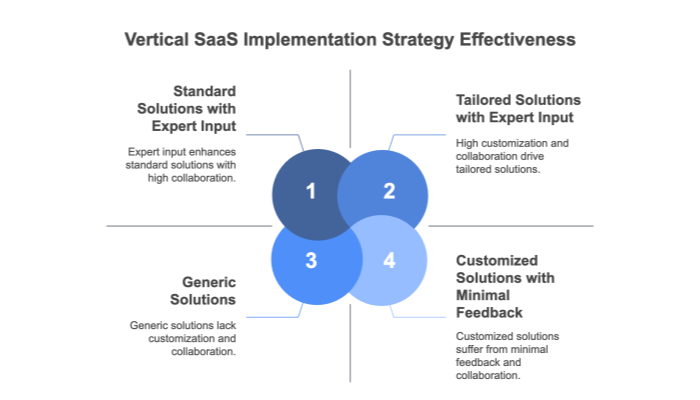

As industries become more digitalized, vertical SaaS solutions continue to evolve, incorporating AI, machine learning, and automation. The growing demand for tailored software, improved integrations, and sector-specific analytics will shape the next generation of vertical SaaS platforms.
As businesses in specialized sectors discover the advantages of domain-focused solutions, investors are pouring capital into vertical SaaS. Emerging verticals like telehealth, cannabis, or alternative finance have unique compliance needs, driving demand for specialized cloud software.
By applying machine learning to industry-specific data sets, vertical AI SaaS unlocks new capabilities:
While predictive analytics exist in horizontal solutions, vertical SaaS can leverage specialized data sets for sharper insights—for example, a real estate SaaS might integrate local market trends and property specs to predict valuation swings.
Industries and regulations constantly evolve. A modular architecture lets businesses add or remove components—like analytics modules or compliance add-ons—without disrupting the entire system, ensuring long-term adaptability.
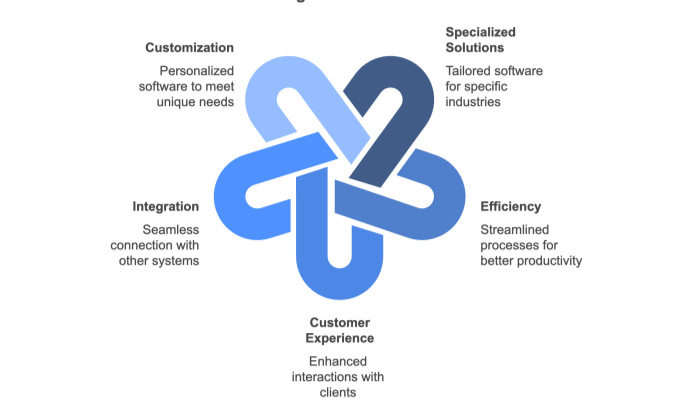

Choosing the right vertical SaaS solution involves assessing industry fit, scalability, compliance capabilities, ease of integration, and vendor support. Evaluating total cost of ownership (TCO) and conducting trials can help businesses make informed decisions.
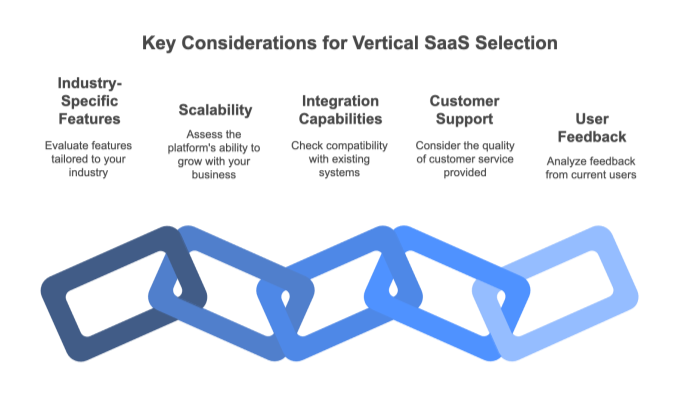

Real-world case studies demonstrate how businesses have successfully implemented vertical SaaS solutions, showcasing key challenges, benefits, and measurable outcomes. These insights provide valuable lessons for organizations considering similar transformations.
An insurance firm adopted a vertical SaaS platform specialized in underwriting and fraud detection. Within six months:
A multi-location clinic network implemented a vertical SaaS EHR solution:
A property management company leveraged a vertical SaaS suite for rent collection, vacancy turnover, and maintenance tracking:

As businesses strive for greater efficiency, better customer experiences, and simplified regulatory compliance, vertical SaaS emerges as the tailored, future-ready alternative to generic horizontal software. By focusing on specialized domain knowledge, vertical SaaS platforms don’t just add features—they transform entire processes, reshaping how industries function from the ground up.
In an increasingly competitive market where every second counts, adopting the vertical SaaS model could be the strategic advantage you need—delivering profound, lasting innovation in a space where specialized solutions are not just preferred, but essential.
Ready to explore how vertical SaaS can revolutionize your industry? Our eBook, Don’t Get SaaS’d, offers expert insights and practical strategies to help you adopt and optimize specialized SaaS solutions. From compliance considerations to workflow automation and ROI measurement, you’ll learn everything you need to succeed.
Download Don’t Get SaaS’d now and unlock the potential of vertical SaaS for your business.